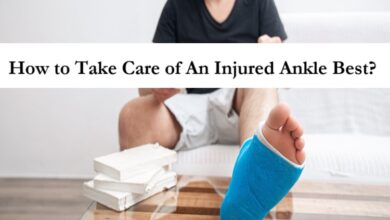Introduction
A personal injury claim is a legal process you can initiate if you’ve been physically or emotionally harmed due to someone else’s negligence or wrongdoing. These claims cover a wide range of incidents, such as car accidents, slip-and-fall incidents, medical malpractice, workplace injuries, and even harm caused by faulty products. If you’ve been injured and it wasn’t your fault, a personal injury claim might help you receive compensation for your losses. In this detailed guide, we’ll explain personal injury claims, from understanding key legal terms to going through the claims process.
What is Negligence?
Negligence is a central concept in most personal injury claims. It’s a legal term that means someone didn’t act as carefully as they should have, leading to harm. Proving negligence involves showing four key things:
- Duty of Care: This means that the other person (the defendant) had a responsibility to act carefully to prevent harm. For example, drivers have a duty to follow traffic laws to protect others on the road, and property owners must maintain a safe environment for visitors.
- Breach of Duty: You need to show that the defendant didn’t meet their duty of care. This might mean they did something reckless or failed to act in a way a reasonable person would. For example, if a driver runs a red light, they have breached their duty to follow traffic laws.
- Causation: You must prove that the defendant’s actions directly caused your injury. If you’re in a car accident, for example, you would need to prove that the driver’s negligence (like speeding or ignoring a stop sign) caused the accident that led to your injuries.
- Damages: Finally, you need to show that you suffered actual losses or harm because of the negligence. This could include medical bills, lost income, physical injuries, or emotional suffering.
Without proving all four elements, it’s challenging to win a negligence-based personal injury claim.
Types of Personal Injury Claims

There are many different types of personal injury claims, each with specific situations, requirements, and challenges. Some common types include:
- Car Accidents: Motor vehicle accidents are one of the most common sources of personal injury claims. These can involve cars, trucks, motorcycles, bicycles, or even pedestrians, often resulting in serious injuries and property damage. Claims can involve both the at-fault driver and, in some cases, third parties, such as vehicle manufacturers.
- Slip and Fall Accidents: If you slip, trip, or fall due to hazardous conditions on someone else’s property—like a wet floor without warning signs, broken steps, or uneven sidewalks—you may be able to file a claim. Property owners have a duty to maintain safe conditions and warn of any hazards.
- Medical Malpractice: When healthcare providers like doctors, nurses, or hospitals make preventable mistakes that result in harm, they may be held liable for medical malpractice. This might include surgical errors, misdiagnosis, prescription errors, or neglect.
- Workplace Injuries: Injuries at work are generally covered by workers’ compensation. However, in cases where negligence is involved or third parties are responsible, you may be able to file a separate personal injury claim for additional damages.
- Product Liability: If a defective or dangerous product causes an injury, you may have grounds for a product liability claim against the manufacturer, distributor, or seller. Product liability cases can involve anything from defective car parts to unsafe household products or appliances.
- Premises Liability: This includes injuries that happen on someone else’s property, such as a store, restaurant, or even a private home. Common examples are injuries from unsafe conditions like broken handrails, poorly maintained areas, or insufficient lighting.
The Claims Process
The process of filing and pursuing a personal injury claim involves several important steps. Here’s a breakdown of what to expect:
- Seek Medical Attention: After an accident, your first priority should be your health. Seek immediate medical care for any injuries, even if they seem minor. Documenting your medical treatment, diagnoses, and recovery process is essential for your claim.
- Gather Evidence: To build a strong case, collect as much evidence as possible. This might include photos or videos of the accident scene, medical records, police reports, witness statements, and even damaged items. Keep all related documentation organized.
- Consult with a Personal Injury Lawyer: An experienced personal injury attorney can assess your case, advise you on your rights, and help navigate the legal system. They’ll work with you to gather evidence, file paperwork, and represent your interests against the insurance company.
- File a Claim: With the help of your lawyer, file a claim with the at-fault party’s insurance company or directly against the responsible party. The claim outlines the facts of the case, the injuries sustained, and the compensation you’re seeking.
- Negotiation and Settlement: The insurance company may offer a settlement to resolve the case. This is where your lawyer will negotiate on your behalf to reach a fair settlement that covers your expenses and losses.
- Litigation: If a fair settlement cannot be reached, the case may go to court. Your lawyer will present evidence, call witnesses, and argue your case before a judge or jury, who will ultimately decide the outcome.
Damages in Personal Injury Claims

The compensation, or damages, awarded in a personal injury claim generally falls into two main categories:
- Economic Damages: These are direct, quantifiable costs related to the injury, including medical bills, rehabilitation costs, lost income, and property damage. They are based on actual expenses and can often be proven with receipts or records.
- Non-Economic Damages: These are harder to quantify and include losses like pain and suffering, emotional distress, and loss of companionship or quality of life. Since these damages are subjective, they can vary widely from case to case.
Factors Affecting the Value of a Personal Injury Claim
The value of a personal injury claim depends on various factors, including:
- Severity of Injuries: More severe injuries typically result in higher compensation due to higher medical bills, longer recovery times, and increased suffering.
- Medical Expenses: The cost of your medical care, from initial treatment to rehabilitation, influences the claim’s value.
- Lost Wages: Any income you’ve lost because of the injury, as well as potential future income if you’re unable to return to work.
- Pain and Suffering: Physical and emotional pain or trauma resulting from the injury.
- Loss of Consortium: Compensation if your injury has affected your relationship with a spouse or partner.
- Liability: The degree of fault assigned to the other party can impact compensation. In some cases, your compensation might be reduced if you are found partially at fault.
Common Mistakes to Avoid
When filing a personal injury claim, here are some mistakes that can hurt your chances:
- Delaying Legal Action: Each state has a statute of limitations, a time limit for filing a claim. Delaying can mean losing the right to seek compensation.
- Talking to Insurance Adjusters Without a Lawyer: Insurance adjusters often aim to minimize payouts. Having a lawyer ensures your rights are protected and that you don’t unintentionally harm your case.
- Posting on Social Media: Be cautious about discussing your injury or accident on social media. Insurance companies may use social media posts to argue against your claim.
- Accepting a Low Settlement Offer: Insurance companies often make low initial offers. Consulting a lawyer can help you understand if the settlement is fair or if you should hold out for more.
Conclusion
If you’ve suffered an injury because of someone else’s negligence, understanding your rights and taking the right steps is essential. A personal injury attorney can help protect your interests, build a strong case, and work to get the compensation you deserve. Remember, time is crucial, so don’t delay in seeking legal guidance to maximize your chance of a successful claim





